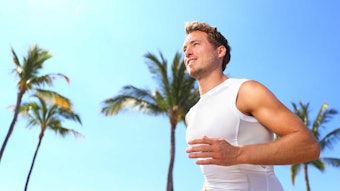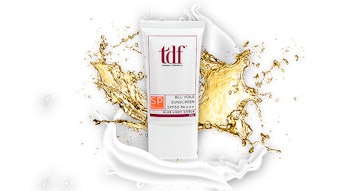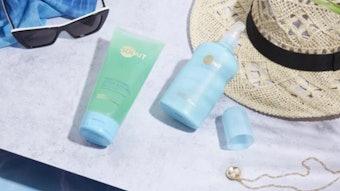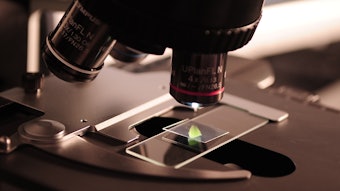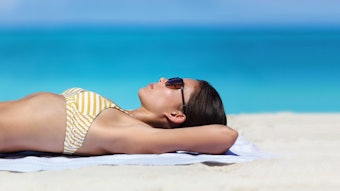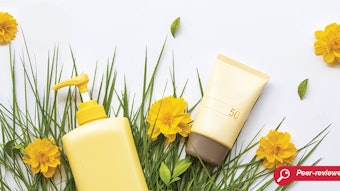Consumer product testing and the procedures behind claims substantiation protocols are topics of increasing interest in the new product development process. And as stated in previous articles,1 whether producing cosmetics for small, independent boutique brands or for large multinational corporations, the race to enhance—or, at the very least, match—a product’s on-pack claims to the competitors’ is of paramount importance to gain the crucial foothold in the relevant market and target demographic.
Consumer knowledge about the skin’s aging process and the hazardous implications of overexposure to UV radiation has moved SPF products from purely safety-directed marketing campaigns to strongly efficacious selling points. In addition, UV protection is now incorporated into daily moisturizing products as well as sun protection products, and this has all led to an increased volume of SPF product tests submitted to consumer testing houses. There are various test methods set by global governing bodies for SPF protection, but this article will discuss the five time-point internationally approved ISO 24444 method.
It must be noted that the debate between the benefits of multifunctional versus monomethodic products is presently rife within the industry; here it is only touched upon to acknowledge it and recommend further reading to draw personal conclusions. However, the expanded marketing opportunity of SPF products has led to the need for marketing and formulating teams to differentiate between similar products on the market. This is regularly facilitated by adding safety claims such as “hypoallergenic” or efficacy claims for higher SPF factors and/or full UVA/UVB protection on the package.
Whether the right sun protection is 15 or 100 is not in this article’s agenda; the answer will depend on the product’s use relative to the environment and regular re-application of the product by the user. What will be focused upon here is the process involved in testing sun protection products to ensure that claims, whatever they may be, are substantiated.
Protecting Skin from UV Radiation
At this stage, it would be good practice to review the basic relationship between skin and the sun. The sun’s UV radiation encompasses all wavelengths of the electromagnetic spectrum, and around 99% of that which reaches the skin surface is between 200–400 nm. These are the primary wavelengths this article will consider. UVB rays, 280 to 320 nm, partially attenuated by the ozone layer and the Earth’s atmosphere, do not penetrate deeply into the skin. UVB normally penetrates 1–2 mm through unprotected stratum corneum and into the epidermis; of course, subsidiary knock-on effects, some of which are beneficial, occur deeper. However, this short wavelength means it can cause sunburn, tanning, photoaging, UV-induced immunosuppression and some cancers.2
In contrast, UVA rays have longer wavelengths of 320 nm–400 nm and, therefore, are less intense, making them seem friendlier—especially since this lower intensity is the main producer of a tanned look. Until around 20 years ago, the majority of sun protection products solely marketed the product’s SPF value, as this conveyed how well the product protected against “harmful UVB rays.” While the testing procedures to examine this functionality remain the same today, it is now known that, on average, 95% of the UV radiation that reaches the Earth’s surface is UVA radiation, with relatively stable intensity throughout the year—as it is seldom attenuated by clouds or glass. Due to these longer wavelengths, UVA rays can penetrate the skin more deeply than UVB—up to 5 mm beneath the skin’s surface on the thickest body parts—and play a major role in photoaging.
Moreover, skin tanning is not the body’s congratulatory response to spending time in the sun to provide a “healthy” look, as this function is actually the mutation of the cells to defend against the sun’s rays. The skin darkens by oxidizing and redistributing the body’s melanin cells to the necessary areas in an imperfect attempt to inhibit further DNA damage. The darkening of melanin and any melanogenesis, i.e., production and distribution of melanin cells, that occurs allows the body to dissipate radiation more effectively by means of heat expulsion, rather than allowing continued DNA damage. Furthermore, the depth of UVA ray penetration facilitates the damage of more sensitive and delicate cells on the dermis-hyperdermis boundary, such as keratinocytes, as well as DNA mutation at the skin’s surface of the skin, which has prevalently been shown to initiate skin cancers.
What cannot be denied from the science is that for full protection, a broad spectrum sunscreen for both UVA and UVB is necessary, whether the user’s intentions are for health or cosmetic purposes. A broad spectrum sunscreen works by organic and inorganic materials, such as zinc oxide or titanium oxide, reflecting UVA and UVB away from the epidermis and dermis. Regardless of the type, all SPF denominations work in the same way—as a multiplication factor. Skin has a natural SPF, which, as noted, is determined by melanin production, and an SPF product works by extending the natural period of time that it would take for an individual’s skin to burn from the sun’s rays. For example, an SPF 10 product would allow an individual to stay in the sun ten times longer than their natural SPF would allow them to before their skin becomes sunburned. This is the basis of how and why SPF testing protocols are performed, which will be explained here.
Sun Protection Methods
Although UVA protection is now understood to be of paramount importance, marketing drivers, consumer purchase preferences and protection levels in advertising and on packaging are very much steered toward UVB. This is because UVB is the main source of sunburn—the most immediate inconvenience, and the most dangerous outcome of sun exposure with which users must contend. Plus, internationally approved methods for SPF testing are, for the most part, ubiquitously agreed upon, whereas UVA tests have many different approvals for different geographic regions—from UVA PF, to the Boots star system, to UVA PA.
The various test methods set by global governing bodies for SPF protection are similar, differing mainly in UV wavelength frequency, the minimum number of time points taken, or the minimum number of test subjects recruited. In the interest of appealing to the largest audience, here the five time-point internationally approved ISO 24444 method will be discussed. It is worth noting here that the 2011 U.S. Food and Drug Administration (FDA) Final Rule is another primary SPF standard, and runs a similar test method as ISO 24444 but uses a total irradiance of 1,500 W/m2 instead of the ISO’s 1,600 W/m2. Add-ons to the ISO SPF study can also test for sand, sweat and water resistance, but this will not be covered. Also, note that the industry is working on many in vitro, in silica and other hybrid methods to remove the need for human exposure to UV light; however, only these two in vivo methods are approved at this stage.
Subjects and Assessment Type
All subjects of an SPF study typically are Fitzpatrick skin types I-III because these types are the most susceptible to sunburn. The first step is to generate a pre-treatment minimal erythema dose (MED) for each subject, which is the minimal amount of UVB light needed to elicit barely perceptible erythema in the skin. This is measured in seconds and determined by an expert who visually assesses the skin as having changed by a minimum of 0.5 on an incremental visual erythema scale of 0–4. Each subject will have an individual MED that is time-dependant on their skin’s natural SPF.
To elicit the correct wavelength and strength of UVB light on the skin, a solar simulator typically is used. Note that recently there has been widespread debate over the ethics of eliciting humans to solar rays, thus alternative in silica methods are being developed. One method uses a fiber optic liquid light guide that reflects UV light from the solar simulator, down the tube and onto the skin site. For this test, the lower back is usually chosen as the test skin site, as it tends to have the lowest prior sun exposure and lightest pigmentation while also not being overly sensitive. At press, such methods have not yet been accepted as a global standard, although this author believes are a necessary step forward for UV testing.
Procedure
After determining the baseline time for each subject, the test product is applied to the skin on individual delineated sites at a rate of 2.00 mg/cm2. UV light is then administered for a calculated period of time, explained later, to produce erythema at varying degrees. At specific points between 0 sec and a final time point, the assessor will view the site under treatment and assess its level of erythema on a 0-4 scale. The specific time points are based on subjects’ individual pre-treatment MED times.
The ratio between the pre-treatment MED value and the post-treatment MED value provides the basis for calculating the SPF value of the product. This will hopefully show a lengthening of the time it takes for skin to burn under the tested UVB radiation wavelength. A reference formulation is also used—i.e., a control to include all expected SPF values, referred to arbitrarily as the P3, which, for this testing environment, has an SPF of 16.2.
Validations and Expectations
Table 1 shows what one might expect from standard tests of P3’s validity based on 10 subjects. Such a table is constructed to ensure that a product with known sun protection properties performs within the bounds of expectation on the chosen population. It is created in advance in order to calculate when to take MED measurements in actuality. The bounds for the P3 to validate a given study rely on the mean SPF values between 13.7 and 18.5; this specific example has a mean of 18.2, which validates the study. This table and procedure, described next, are then reproduced for the product in question, taking into account the expected SPF value of the product.
In detail, this table lists the 10 subjects down the first column labeled “Subject Number.” The next column shows the individual subject’s pre-treatment MED, which is the measured amount of exposure necessary for the solar simulator to elicit a 0.5 MED rating on the 0-4 incremental erythema scale—e.g., 19 sec for Subject 1. From this, the different time points within the study, denoted as 1a–5a in the table, are calculated to determine when measurements of the erythema level at the test site should be taken. By multiplying the expected SPF of the sample in question—16.2 for this example; by the subject’s individual pre-treatment MED value—19 sec for Subject 1; one can determine the time at which the first 0.5 erythema should be elicited. Calculated out, 16.2 SPF x 19 sec = 307.8 sec, or 5 min, ~8 sec.
As previously mentioned, in essence, the function of an SPF product is to lengthen the time period before skin shows initial redness, and this is determined by the ratio of the SPF product to the individual’s natural SPF. Thus, by finding the initial erythema production at this expected point—the mid-point of Table 1, see column 3a—one can assess whether the product is performing to its intended SPF value.
From determining the expected time for an individual’s erythema elicitation, one can then work out time points 1a and 2a, which are the two preceding time intervals before the mid-point measurement. At these times, measurements are taken but no erythema production is expected—if the sample is performing to its expected SPF value. Time points 4a and 5a are then calculated using the same multipliers as for 1a and 2a, and should show erythema production to a scale of 0.5 and above, as the expected erythema production time-point 3a has already been surpassed.
Notably, if erythema has not been deemed visible at the mid-point, time-points 4a and 5a are further assessed to see when or if erythema has been produced. Initial erythema production at time points 4a and 5a indicates that the sample is performing above its intended SPF value. The measurements for whether erythema has been produced at the various time points are shown in Table 1 in columns 1b–5b.
Statistically Significant
Different multipliers are used to adjust for greater statistical sensitivity of the data. For products < SPF 25, a multiplier of 1.25 is used to calculate the time-points above and below the mid-point; for products > SPF 25, a multiplier of 1.12 used. Time-point 2a is calculated by dividing the mid-point time by the multiplier. Thus, 5.08/1.25 (since P3 has an SPF 16.2) = 4.06. For 1a, the mid-point time is divided by the multiplier squared; i.e., 5.08/1.252 = 3.25. Point 4a is calculated by multiplying the mid-point time by the multiplier; thus, 5.08 x 1.25 = 6.35. Finally, 5a is calculated by multiplying the mid-point time by the multiplier squared; i.e. 5.08 x 1.252 = 7.94. These calculations are performed for all subjects, thus the time points are all dependent upon the individual subject’s MED multiplied by the expected SPF of the product.
This method for calculating the P3 is exactly the same as for calculating the performance of the SPF sample in question, and proves the product’s SPF validity or not. Subjects 1–10 will have the same MEDs for the P3 as well as the SPF product under investigation because the same people test all the products for the same study; however, the time-points will be different as the intended SPF should be different from the P3. At the end of the treatment, the MED is re-determined at a naïve site to see that nothing has changed over the time period, as another safety check.
The far right column in Table 1 shows the individual SPF value for each subject. This is calculated using the mean or intended SPF, and the multiplier for the actual time-point at which the erythema of 0.5 initially occurred, described above. Subject 1, in this example for P3, elicited erythema at time-point 4; as points 1, 2 and 3 all have grades of 0.0. Thus, the individual SPF for Subject 1 for this P3 example is calculated by: 16.2 (i.e., mean or intended SPF) x 1.25 (multiplier)—because this was the multiplier used to determine time-point 4, which = a 20.25 individual SPF. Subject 2 reached the 0.5 MED at time-point 3—i.e., the mid-point, so that individual SPF is simply 16.2. If the MED was reached at time-point 5, the mean or intended SPF (i.e., 16.2) is multiplied by the multiplier squared (1.252); equalling an individual SPF of 25.31. Finally, the SPF of the product is considered the mean of the 10 subjects’ individual SPFs for the product in test.
Conclusion
In a nutshell, this is the basis of SPF testing in its entirety. Additional calculations for standard deviation, confidence internal and probability coefficient (p value) are then used to further validate the tests, as per any statistical calculation. It is interesting to note the difference in time it would take to test an SPF 10 product vs. an SPF 100 product; this must be taken into account and budgeted accordingly.
The sun protection segment has been very active, especially at the 2013 Sun Protection Conference, held this June in London, and there is a clear need to create user-friendly and elegant sun protection products with high SPF values and UVA protection ratings so that both aesthetic and health negatives associated with the sun’s rays are prevented as best as possible. It will be interesting to see how the industry moves forward in terms of providing global standardizations for tests with the recent increase in interest for animal-alternative test methods. For now, the ISO 24444 and 2011 U.S. FDA methods set the standard.
References
Send e-mail to [email protected].
1. CJ McLeod, Testing tactics in skin: Moisturization claims, Cosm & Toil 128(8) 390-394 (Jun 2013)
2. DD Moyal and AM Fourtanier, Broad-spectrum sunscreens provide better protection from solar ultraviolet-simulated radiation and natural sunlight-induced immunosuppression in human beings, available at www.ncbi.nlm.nih.gov/pubmed/18410801 (Accessed Jul 12, 2013)
!['[Sunscreen] developers will be able to innovate more efficiently while maintaining high standards of quality and safety for consumers.'](https://img.cosmeticsandtoiletries.com/files/base/allured/all/image/2024/06/woman_outside_using_sunscreen_on_face_ISO_test_standards_AdobeStock_783608310.66678a92029d9.png?auto=format%2Ccompress&fit=crop&h=191&q=70&rect=62%2C0%2C2135%2C1200&w=340)
